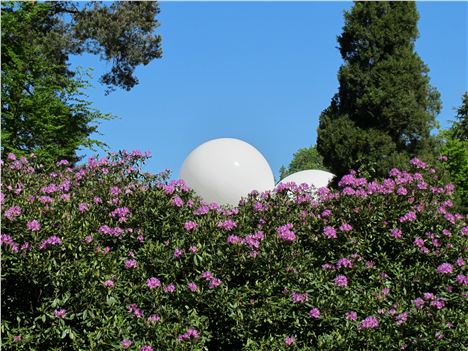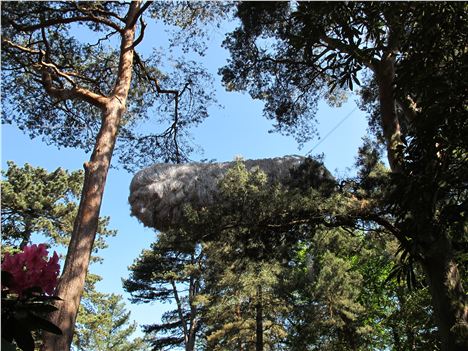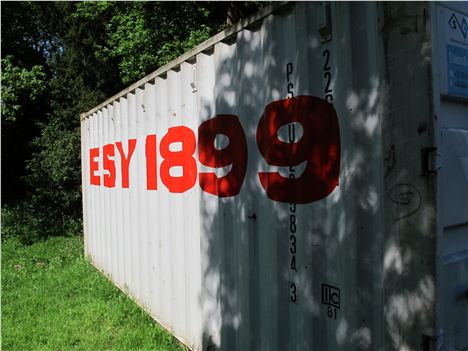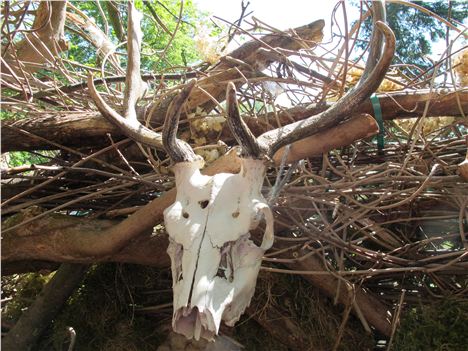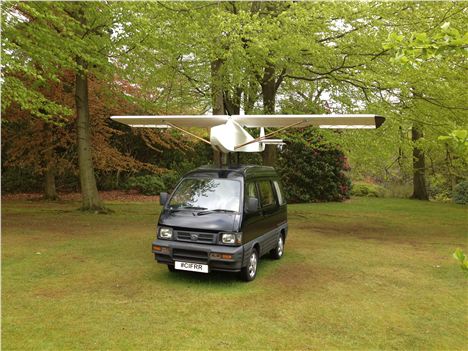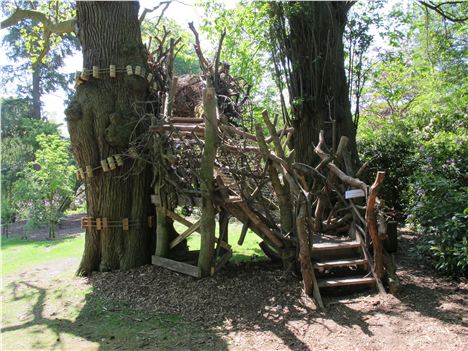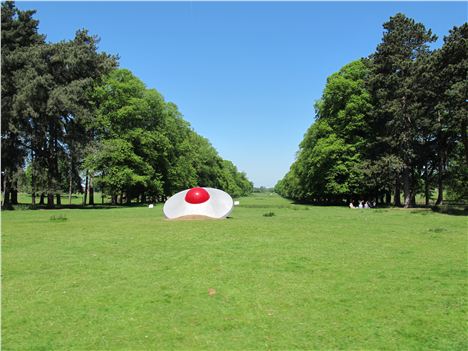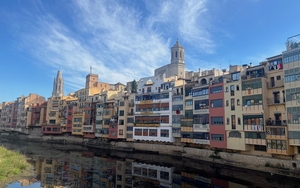ARTISTS love to talk of 'interventions'. Curators can't help themselves. Even architects are at it.
You get a buzzword or phrase in art and everybody piles in until the poor thing is beaten to a bloody pulp and you can't even recognise it properly.
At the launch of the Tatton Park Biennial 2012 the word 'intervention' was overused as usual.
But what did the artists mean?
In art terms an 'intervention' is a work that interacts with a previously existing artwork, audience or venue or, in Tatton's case, a stately home, a garden and a deerpark.
This is the best Biennial yet. It fulfills the brief of 'Flights of Fancy' well and magnificently collides the formality of the house, the beauty of the gardens and the surprise of the art.
You get the feeling that artists love 'interventions' because they free them, relax them, and get them out of the studio or the gallery and into places where their imaginations can run riot.
This has happened at Tatton in 2012.
But forget 'interventions' what we've got here are 'enhancements'. Surely anybody walking through some of the most beautiful formal and informal gardens in Europe amongst crowns of rhododendrens and perfumed glades of azaleas, and then happening upon Oliver Grossetetes' Pont de Singe (main picture above) would have to agree?
Grossetete's 'folly of design and engineering' comprises giant helium balloons floating a bridge from nowhere to nowhere.
As you walk the beauty of the gardens dazzles and dazes, throws you almost into a trance and then you come across Pont de Singe and the sense of unreality is complete. I've scarcely seen anything as ethereal and moving in years of viewing art. I had to sit down for a while, breathe deep, and just watch the play of light across the balloons and the gentle hammock-sway of the bridge.
The work points to the theme this year, the third Biennial, which is ‘Flights of Fancy’. This focuses on the aeronautical legacy of our region and the innovations of Tatton’s last Lord Egerton, who opened the grounds to the RAF as one of the nation’s first drop zones for parachutists during World War Two.
That's the nitty gritty of it and then, of course, the artists spin off into their own worlds.
The video above was taken in the Japanese Garden and features TV personality, Monty Don, sat down and sneakily filming, with Pont de Singe in the background.
Charbel Ackermann's giant microphone boom, Dead Cat, almost does for the ears what Grossetete does for the eyes. From a weird cocoon of steel wool comes variously the song of a nightingale, the throb of Lancaster bombers setting off for Germany, glasses clinking in a dinner party, North African pipe music and sheep bleating. The backdrop of the gardens, the mingling of the natural sounds and the introduced ones again send the mind off on journeys near and far.
Less successful are the video installations inside various containers and capsules. Simon Faithfull's ESY1899, Re-enactment for a Future Scenario, which plays on the experience of air travel removes the viewer from the garden and thus loses half the experience.
Meanwhile Hilary Jack's splendid Empty Nest, seems to grow out of the garden and works with it rather than fights against it. This is a vast rook's nest, almost a parody of the stately home close by, turning its back on formality and stepping back into nature - there's a disturbing air of Pan here, the reckless, unrestrained, half-goat, Greek god of the wild.
For kids it's the ultimate treehouse and comes complete with deer skull, mimicing the heads of dead animals displayed in the mansion.
Away from the garden and in the house, Sarah Woodfine's Recipe for a kiss of shame, brings together witchcraft, botany and alchemy, and hints at the warped magic that causes witches to fly. It's fun, yet sinister and nicely crafted.
Tessa Farmer's Cosmic Cloud carries all these qualities too and constructs a skeleton fairy supposedly made from the remains of animals sent into orbit from Earth in the name of science. There is no space at all in Lucy Gunning's video in the cellars, just a sense of claustrophobia as she goes Climbing Around My Room without touching the floor.
But most of the magic, most of the 'fancy' is in the gardens and grounds.
Manchester based UHC artists have produced The Cartland Institute for Romance Research which is worthy of an article in itself - to be published next month.
They've researched the pink-clad first lady of romance, Barbara Cartland, and made her the hero in a caper involving Colditz prisoner of war camp, an escape in a glider and a camper van. They've even written a Cartland-esque novel to accompany it.
While outside visitors should spend time too with Dinu Li's VEX, Juneau Projects Gleaners of the Infocalyse and Brass Art's Trine Messenger.
This is the best Biennial yet. It fulfills the brief of 'Flights of Fancy' and magnificently meshes the formality of the house, the beauty of the gardens and the surprise of the art. Well done to the curators Danielle Arnaud and Jordan Kaplan.
Part of the delight of the Biennial lies in the knowledge that the artworks are temporary, with the summer life of one of the cabbage white butterflies fluttering in the garden. People have until 30 September to view them and then they're gone - very apt in a garden subject to the seasons. Don't miss this 'enhancement'.
To help you do get to Tatton here's a special Confidential offer.
Tatton Park Biennial 2012 is at Tatton Park, Knutsford, Cheshire WA16 6QN. Events are scheduled throughout the summer from public talks held by an astrophysicist to artists’ workshops and tours of the grounds. There are downloadable apps and MP3 audio guides too. Click here for more information.
You can follow Jonathan Schofield on Twitter here @JonathSchofield










